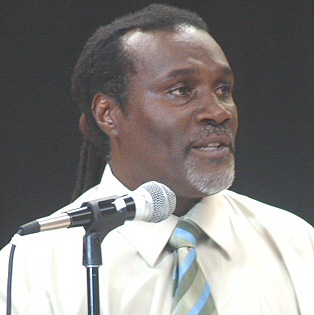
Tuesday’s gathering at the University of the Virgin Islands St. Croix campus was the first of three meetings to gather public input on the plan. Similar meetings will be held Wednesday on St. Thomas at the at UVI’s First Floor Administration and Conference Center, formerly called the Harvey Building and Thursday on St. John at the Legislature building. Both meetings begin at 6 p.m. and are scheduled to run until 9 p.m.
According to Bevan Smith, director of the V.I. Energy Office, these hearings are not pro forma exercises scheduled to meet some kind of requirement. The Energy office really wants to hear what people think about the proposal. "If we said we’re looking for input, we’re looking for input," he said. "We don’t have to do this."
The strategy is a 67-page draft that sets out goals for the territory to reduce energy costs, increase efficiency of energy use and production, increase fuel diversity and reliability and promote clean energy. It establishes 31 strategies for reaching those goals.
But all the work that has gone into the document won’t mean anything unless all stakeholders — the public, government, businesses and utilities, take part.
For that reason, public input is an important part of the process, Smith said. And Wednesday’s audience, though small, did not disappoint.
Manny LaMotta asked if the Water and Power Authority is really going to buy into a plan to reduce energy usage, when reducing usage would reduce the utility’s revenue.
"It seems like we’re on opposite trains of thought here," he said.
But WAPA Executive Director Hugo Hodge Jr. explained that while a slight drop in energy use would cause a problem for the utility, a bigger decrease would actually help it. WAPA’s generators run best near full capacity, he said, and a slight decrease would cause them to run inefficiently. It’s only when the decrease is steep enough that one or more generators can be turned off completely that efficiencies compensate for the lower usage.
Brad Zuehlke asked if the plan could call for adopting off-peak rates, in which customers would pay a lower rate for electricity if it came during a time when demand was lower. While the plan works in some areas in the States, Hodge said the Virgin Islands aren’t in a position to try it yet. To do that, it would need meters that record not just how much electricity was used but when it was used, and a system that could read that data.
Zuehkle also asked why the strategy touts the advantages of compact fluorescent lights, those twisting bulbs the replace incandescent lamps and provide the same light for a fraction of the price, but makes no mention of new LED lighting fixtures, which hold out the possibility of much greater savings than CFLs.
Smith agreed that LEDs hold great promise, but there are none currently approved by Underwriters Laboratory.
The draft sets as a goal that by 2015, 20 percent of the territory’s electricity should derive from renewable sources, including solar and wind power, and 25 percent by 2030. To help achieve that goal, the Energy Office is developing a map of where the wind blows. Modern wind turbines require a wind of 12 to 18 miles an hour, Smith said, so mapping out where the resource is most prevalent — where the wind blows most constantly — is an important first step.
The plan is available online at the office’s website.